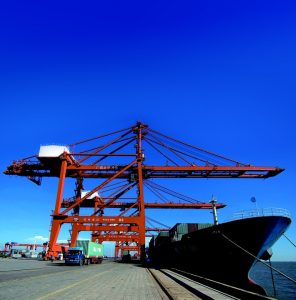By Valérie Le Brenne
Translation: Davina Durgana
Passage au crible n°57

Pixabay
On January 15th, 2012, mining company Guangxi Jihne Mining Co. Ltd. Polluted the Longjiang river (situated in the autonomous region of Guangxi, south of China) by dumping cadmium (mineral related to the operation of the zinc and highly toxic). As fish farming remains a core activity, the death of hundreds of fish gave the alarm to the local authorities who immediately tried to neutralize the product. Liuzhou, the second largest city in the region, located 60 km downstream of the pollution, is thus directly exposed. Despite official speeches tinged with optimism, the inhabitants of the city rushed to supermarkets to stock up on bottled water, reinforcing the risk of shortages.
This incident adds to a long list of industrial pollution of waters registered in China in recent years. These damages occur even though the country is experiencing considerable disparities in water and a growing water scarcity, besides the need for multiple energy resources which is increasing exponentially.
> Historical background
> Theoretical framework
> Analysis
> References
Since 1979, under the leadership of Deng Xiaoping, China has progressively entered the market economy and achieved levels of growth and competitiveness that now make it the second largest economic power in the world. Among the many objectives of this transition, one was to reduce the volume of imports while increasing exports resulted in strong industrial development, posing the question of de facto energy supply necessary for this level of activity. The existence of sub-soils rich in energy (oil, coal, uranium), metallic ores (copper, zinc, bauxite) and non-metallic (graphite, sulfur, phosphorus) quickly led extensive campaigns of prospection and the opening of many mining sites, coinciding with the creation of many extraction companies.
Since the 1990’s, the question of energy is equally posed with the problem of the unequal partition of water on the territory. In fact if South China presents abundant hydraulic resources, allowing rice cultivation, the North remains, however, marked by a lack of water and an arid climate. The aim of rebalancing the South-North transfer peaks elsewhere in the project of Three Gorges Dam completed in 1992, and for which China was sentenced to the International Water Tribunal in The Hague, following a complaint by Canada.
Meanwhile, China has entered a process of urban transition. The influx of rural migrants has led to the emergence of new towns, whose numbers increased from 69 in the late 1940’s, to 670 during the 2000’s.The increase in demand for consumer goods, to which is added the economic opening of coastal cities to foreign companies are increasing industrial production. Therefore, the pollution associated with industrial activities, whether the air pollution, linked to coal mining, or that of water by the discharge of toxic effluents, have multiplied, generating heavy risks to public health.
Retain two lines of thought:
1. Pressure on energy resources to meet both local and global demands of economic development poses imperatives of productivity to Chinese industry. Thus, by increasing the pressure on energy resources the privatization of Chinese state enterprises was accelerated. However, the transition to market logic involved, in the words of Susan Strange, “a dispersal of power” that makes more complex attempts at state regulation.
2. The emergence of a Chinese civil society: the increasing amount of industrial incidents has encouraged the emergence of a civil society. This is particularly evident in public health and the environment. These issues represent for social actors poles of structuration, some – strong transnational ties – seem now to be considered by the authorities.
Cadmium pollution in the Longjiang River by the mining company Guangxi Jinhe Mining Co. Ltd. is symptomatic of the imperatives of productivity and competitiveness posed by the economic growth of the industry. Indeed, the weight of industrial production generates a constant pressure on energy sources whose control is a major strategic issue. In this perspective, mining firms must enhance their level of activity, achieving higher yields and diversifying their supply sources. Now, many Chinese firms are located in Africa and compete with Western companies in the energy market. However, if the increasing privatization makes the transformation of these companies into transnational companies more possible, it simultaneously reduces the regulatory capacity of the state.
In fact, this incident reveals the absence of binding legislation on corporate environmental responsibility, which has nevertheless generated considerable industrial pollution. Multiple discharges of toxic effluents, such as cadmium, are now causing a real public health problem. Consumption of non-potable water exposes people to serious risks of cancer. Moreover, agriculture is also affected by the environmental impacts of these activities. In 2011, a study published by the economic weekly Xin Shiji revealed that 10% of rice produced in China and exported abroad showed traces of cadmium.
Given the scale of this environmental damage, and under the combined pressure of international organizations and NGOs, the Chinese authorities now aim to reduce their energy consumption and fight against industrial pollution. Besides the creation of local authorities to monitor pollution levels, the government authorizes, under very strict conditions, the existence of environmental NGOs and the presence of international NGOs. Boasting a deficit of state support, the players in the Chinese civil society are therefore taken to be structured around the environmental cause. While informing people of the risks, they also hold some ability to influence state policies, relying in particular on multiple transnational solidarity networks. In evidence of their growing importance, the Chinese government now encourages environmental NGOs to participate in the “black listing” of polluting firms.
Chen Jie, « ONG chinoises, société civile transnationale et pratiques démocratiques », Perspectives chinoises, 97, sept-déc 2006.
Colonomos Ariel (Éd.), Sociologie des réseaux transnationaux: communautés, entreprises et individus. Lien social et système international, Paris, L’Harmattan, 1995.
Keck Margareth, Sikkink Kathryn, Activists beyond Borders: Advocacy Networks in International Politics, Ithaca/London, Cornell University Press, 1998.
Strange Susan, Le Retrait de l’État. La dispersion du pouvoir dans l’économie mondiale, [1996], trad., Paris, Temps Présent, 2011.




